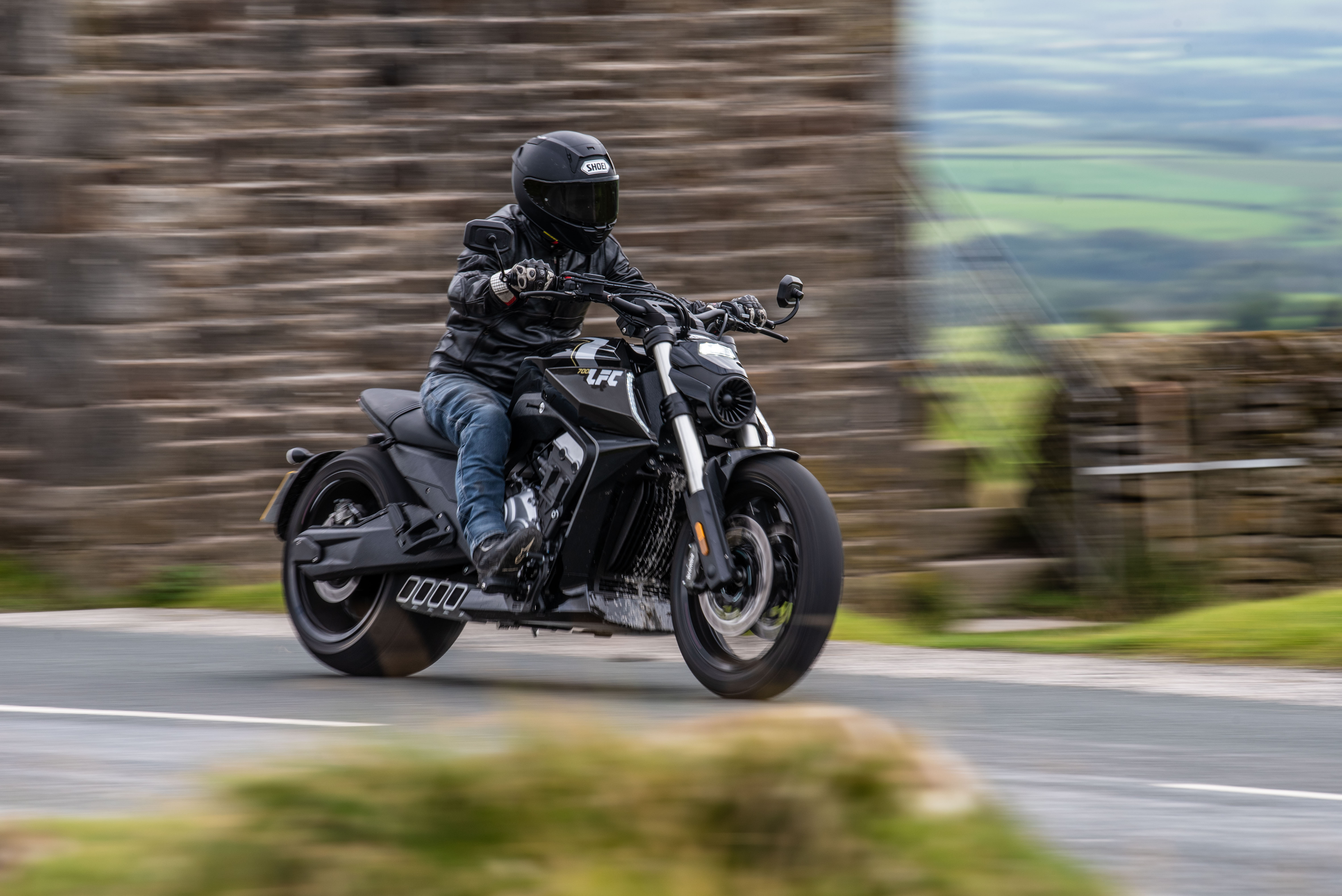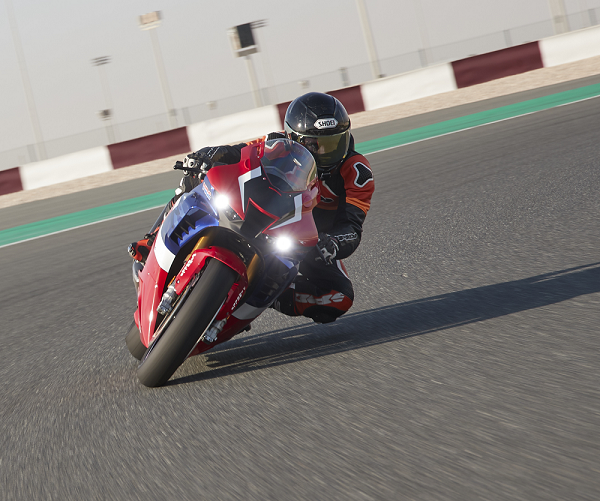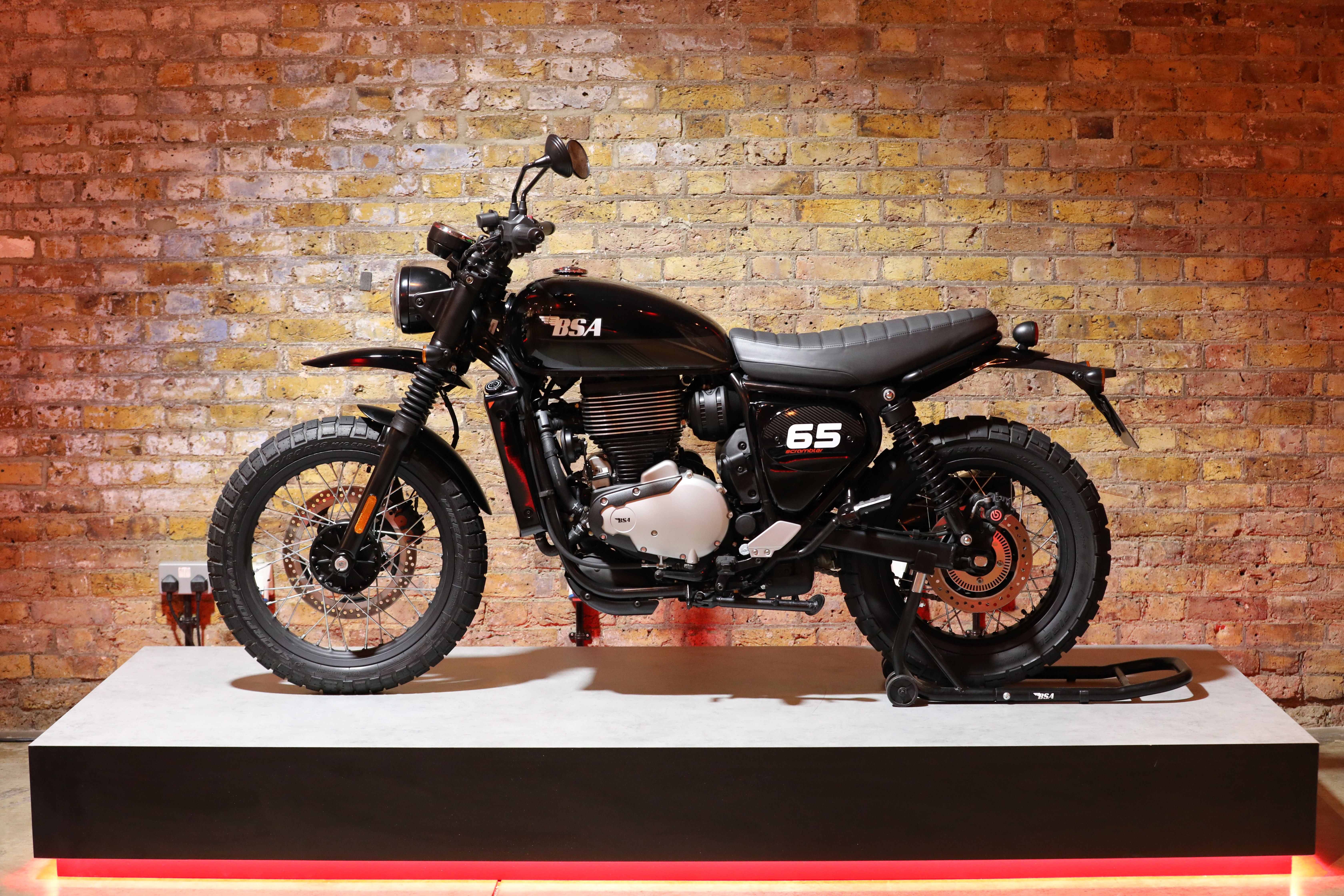Triumph Speed Twin 1200 (2025) Review: Better Than a Thruxton?
Triumph’s latest bike has big boots to fill, as the new and updated two-bike Speed Twin 1200 range steps up in place of the Thruxton

Triumph’s back catalogue of bikes is littered with historically important models, many of which inspire its current two-wheeled offerings.
Perhaps no bike though, is more significant to the brand's history than the Speed Twin, a machine that can trace its roots back to 1937. That bike was, by today's standards, a fairly simple OHV parallel twin, boasting a sub-30bhp power output. What it did for the Triumph brand though was huge, with the Speed Twin being credited by many as being the bike that helped to save the company in the post-war period.

Then we come to the bike I’m in Mallorca to test this week, Triumph’s new and updated Speed Twin 1200 and Speed Twin 1200 RS, two bikes that are anything but simple. This though is quite possibly the most important Speed Twin model to date, as the latest 2025 edition of the bike takes its place at the top of the Triumph parallel twin-cylinder range.
To find out how both versions of the bike handle, we’ve headed to the southeastern corner of Mallorca, to spend a day riding each machine on seemingly endless switchback roads.

What’s new
With the Speed Twin’s status at the head of the table now confirmed, Triumph has taken the 2025 model year to improve and update the bike more than simply exceeding Euro5+ regulations. For starters, the new bike is more powerful than before, boasting 103bhp, and 87lb ft of torque. The increase in peak power and torque is backed up by a boosted mid-range, hopefully making the already gutsy 1200cc engine even more entertaining on the road.

Technology is boosted for 2025 too, with both bikes gaining an IMU meaning lean-sensitive traction control and ABS. Topped off with a new hybrid LCD and TFT dash, the bikes now feature riding modes specific to each model, with the stock 1200 gaining a Road and Rain mode, while the RS gets an extra spicy Sports mode too. The RS version of the bike also gains a quickshifter, becoming the first parallel twin 1200 from the brand to feature one. The stock 1200 can’t be retrofitted with one either, due to the rearset placement on the RS making space for the quickshifter to be used.

Another area of differentiation between the two versions is in the chassis. While the stock machine gets Triumph branded J.Juan front calipers and a master cylinder, the RS gets higher-spec Brembo Stylema stoppers hooked up to a matching Brembo MCS master cylinder. On the suspension front, both get a Marzocchi fork although on the RS full adjustability is on hand and specific base settings. At the rear, the 1200 gets Marzocchi twin shocks with preload adjustability, while the RS gains fully adjustable Ohlins items crowned with gold anodised piggyback reservoirs.

Price, colours and availability
The Speed Twin 1200 starts at £12,495 and comes in Crystal White and Sapphire Black, Carnival Red and Sapphire Black, or Aluminium Silver. The RS comes in at £14,495, and is available in either Baja Orange and Sapphire Black, or a stealthy Sapphire Black option.
Bikes will be landing in UK dealers from December onwards and more information can be found on the Triumph website.

What’s it like to ride?
The Speed Twin was a bit of a funny model in the range, overshadowed by the higher-spec Thruxton and for me, it never seemed to know whether it was a straight roadster or an out-and-out retro sports bike. That changes for 2025, as the new bikes step out from the Thruxton’s shadow, and most definitely stake a claim to the retro sports bike moniker.
Updates to the technical stuff are aplenty, but there are also a number of visual tweaks to set the new model apart from the old. The aluminium headlight brackets are one thing, while a reshaped fuel tank also sets it apart from the outgoing model.

With a chilly morning greeting us as I head towards the line of bikes, the engineers have already fired them up to blow the chill off the morning air. The rumble of around 50 or so bikes seems to permeate the entire hotel complex, as big bore parallel twins reverberate off the faux Baroque architecture.
Snicking the bike into first gear rewards me with a familiar ‘clunk’ from the heavy-duty gearbox. It’s not sloppy feeling at the lever, quite the opposite, but it does give you the impression you are meshing some significantly large cogs somewhere down beneath you.

My morning ride is on the stock 1200, until the lunch stop, at which point I’ll swap onto the sportier RS. As I’m pulling out of the hotel I’m happy to be on the slightly lower spec machine, as with the slightest twist of the throttle the Metzeler Sportec hoops find their limit. With the RS rolling on slicker and stickier, but slippier when cold, Racetec RRs, I’m happy to be setting off in these cooler conditions on the more forgiving hoop - and even happier to have the optional heated grips switched on!

It’s super easy to get settled on a bike like this, the riding position is extremely roomy, and with traditionally placed bars and pegs, you immediately feel at home and relaxed. It helps that the engine rumbling away beneath me is one of the most entertaining and welcoming lumps of metal in the two-wheeled world. Its character is almost warming, with that familiar burble from the upswept twin pipes highlighted by some muted pops and bangs as the engine overruns.

Exiting the town we start to hit the twisties and with the tyres and the air temperature beginning to rise I’m getting less slip and I’m starting to feel the difference between this engine and the one that came before it. Bikes using the 1200 HP (HP meaning High Power) engine are always effortlessly fast and easy to ride, but this new version seems to have just a little bit more of everything everywhere. Its mid-range is noticeably stronger, and where the previous generation engine would seem to run out of puff at the top of the rev range, the extra ponies for 2025 mean you can run it right to the redline.

On the handling front, the new Speed Twin is a much more precise bike to ride fast than the previous model. The suspension on the stocker is slightly softer on factory settings than the RS, and with a more relaxed rider triangle and slightly lower tail, the steering feels light at slow speeds but still direct and pointy enough at pace to allow you to pin it to an apex. I have no complaints with the braking system either, with the J.Juan callipers and 320mm discs at the front offering extremely high levels of power.

The initial bite from the brake is quite sharp, and on a couple of occasions, I send the front suspension diving through its travel with an overexuberant grab of the lever. Thankfully it's not taking too long to get to grips with the stoppers, and with cornering ABS coming as standard now, even the stock 1200 provides you with braking performance that is pretty much sports bike specification. On a couple of occasions, I feel the cornering ABS wading in, but it's a very unobtrusive system, smoothly and accurately modulating the brake pressure on my behalf.

The other side of the IMU is dealing with the traction control system of the bike, and that is where things are starting to get interesting. It’s a phenomenally clever system. It’s so clever that as I’m coming out of corners, and while still carrying some lean angle, I’m asking for throttle and can feel the bike holding back on delivering me any. Instead, the system will bleed in the power but only as the lean angle reduces, and you can almost feel the throttle butterflies opening a little further as the degrees tick off and I near vertical.

It’s almost making riding the bike feel like a video game, and means I can gun the throttle out of any corner, at any speed and let the bike work out the rest. The only time I’ve ever felt a bike doing this is on track, and when riding sports bikes like the Panigale V4 or Fireblade. And before you ask, the system can be switched off altogether, for a more organic riding experience.
The ride leads us to the lunch stop, and after a morning of never-ending switchbacks, I’m glad to get my helmet off and not be flicking from left to right for an hour or so. These roads have been exceptionally twisty, but credit to the supposedly lower-spec Speed Twin in the way it's handled it all. Had there only been one bike on offer this morning, and had it been this stock Speed Twin 1200, I’d have been more than happy with how it had performed.

That's not the case though, and after a belly-filling tapas lunch I’m waddling down to the bikes, for a post-lunch date with the top-spec RS, and before I’ve even turned the key I’m noticing some significant differences. The riding position is quite a bit racier, with bars that are 16mm lower and 9mm further forward than the stocker. The pegs are also more aggressively placed, and sit 6.5mm higher and 40mm further back than on the base 1200.
The revised ergonomics place you in a much more committed position, transferring more weight to the front of the bike and working alongside specific rear-end geometry (the RS is 5mm taller at the back than the 1200) it should be a little more pointy in the corners.

Another first impression I’m getting is that the steering, at slow speeds, is heavier than the bike I was riding this morning. It’s likely a combination of the new riding position and possibly also down to the RS rolling on softer Racetec RR hoops. It’s not a problem once you get above walking pace, but paddling the bike about as we head off from lunch definitely takes a bit more of a heave on the wide flat handlebars.
Another initial takeaway as we get onto the road is how much more progressive the lever feels on the RS. The initial bite from the brakes is nowhere near as sharp, although surprisingly the power from the Brembos seems to be comparable to that of the J.Jaun kit I was using earlier in the day.

As the miles tick off and we head to photo stop two, the big differences between the two bikes are starting to emerge, and as you’d expect, it’s all about the handling. With its sharper geometry and more on-the-nose stance, the RS feels more direct and precise, and for a bike weighing 216kg ready to ride, it’s a very sweet handling thing. The rear shocks are playing their part too, and over bumps and exposed tree roots that nudge the asphalt, it feels nicely composed.
I do get the feeling though that the real key to the handling is the subtle change to the stance, the stickier hoops and the revised weight distribution. It’s better on the brakes into a corner, diving less thanks to bespoke suspension settings and a more progressive lever, and with more preload at the rear, it feels more planted when you do pick up the throttle at the exit. All in all, there isn’t anything I’m really able to dislike on the handling front
There is a caveat to this improved handling though, and where the RS is more direct and focused, the stock Speed Twin feels like a more forgiving bike. It’s more aligned with what a modern classic ‘should’ feel like, with soft-ish but not wallowing suspension, and more dive and squat when you brake and accelerate. The RS on the other hand is stiffer, and feels much more like a retro sports bike than a true modern classic.

One of the defining features of the RS is the quickshifter, and while it's great when at speed, I’m not finding the same thing once the pace drops. I’ve never really used the clutch when riding one of Triumph’s big-bore parallel twins, as the gearbox is so precise and accurate I find clutchless shifting is the way to go. On the RS though I’m finding that successive downshifts can flummoxe the system, and on the second or third change down the box I’ll need to help the bike along with a blip of the throttle. It is though much better at working up the box and when riding harder, and I had no problems with it in that respect.

Should you buy a 2025 Speed Twin 1200?
As I mentioned at the beginning of this review, the Speed Twin 1200 has big boots to fill now that the Thruxton is sadly no more. But fill them it can, as it feels much more like a properly sorted performance bike than the Thruxton ever did. And it's not just a comparison between this bike and its older sibling, for me the Speed Twin always felt like a bit of a confused model, like it was never quite sure if it was a sporty roadster or a straight-forward neo-retro.
What Triumph has done with the 2025 update, and thanks to the introduction of the new RS version, is firmly clear up that confusion. On the one side, you have the Speed Twin 1200, a neo-retro with enough poise and ability to entertain any rider of any ability and experience level. And on the other side of the garage, we have the Speed Twin 1200 RS, a bike that is without a shadow of a doubt a proper retro sports bike. It’s more capable and precise, and when you push on, it's more rewarding to ride.
To sum up the two models I think the best way to describe them is by saying that the stock Speed Twin can do 90 per cent of the things its sibling can, with almost as much poise and control. The RS’s party trick though, is that when you push on to find that final 10 per cent or so, you’re not going to find the limit on the higher-spec bike. It’s quite impressive just how capable it is now.

2025 Triumph Speed Twin 1200 and RS specs
Engine | 1,200cc, SOHC 8-valve, parallel twin, 270 degree crank |
Power | 103bhp @ 7,750rpm |
Torque | 87lb ft @ 4,250rpm |
Bore / stroke | 97.6 x 80 mm |
Compression ratio | 12.1:1 |
Frame | Tubular steel with steel cradles |
Suspension (F) | Marzocchi 43mm fork 120mm travel (fully adjustable on RS) |
Suspension (R) | Marzocchi twin shock / (RS) Ohlins fully adjustable twin shock |
Brakes front | J.Juan 4-pot caliper / (RS) Brembo Stylema M4 caliper - 320mm discs |
ABS | Optimised cornering ABS |
Traction control | Lean sensitive traction control |
Seat height | 805mm / RS 810mm |
Wheelbase | 1,413mm / RS 1,414mm |
Rake | 22.4° / RS 22.6° |
Trail | 91mm / RS 92mm |
Wet weight | 216kg |
Fuel capacity | 14.5 litres |
Price | Speed Twin 1200 - £12,495 / RS - £14,495 |
Warranty | 10,000 miles / 12-months |











